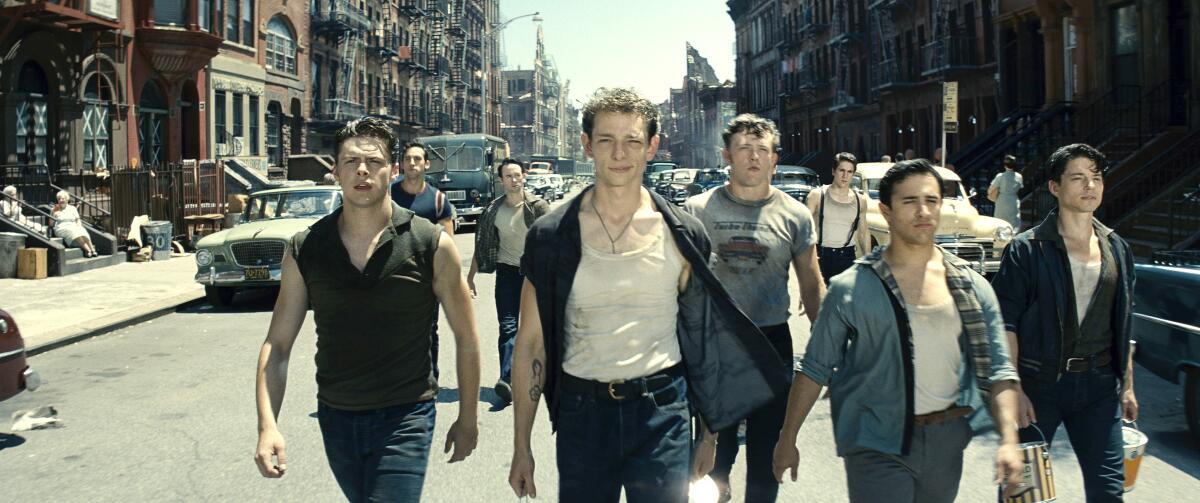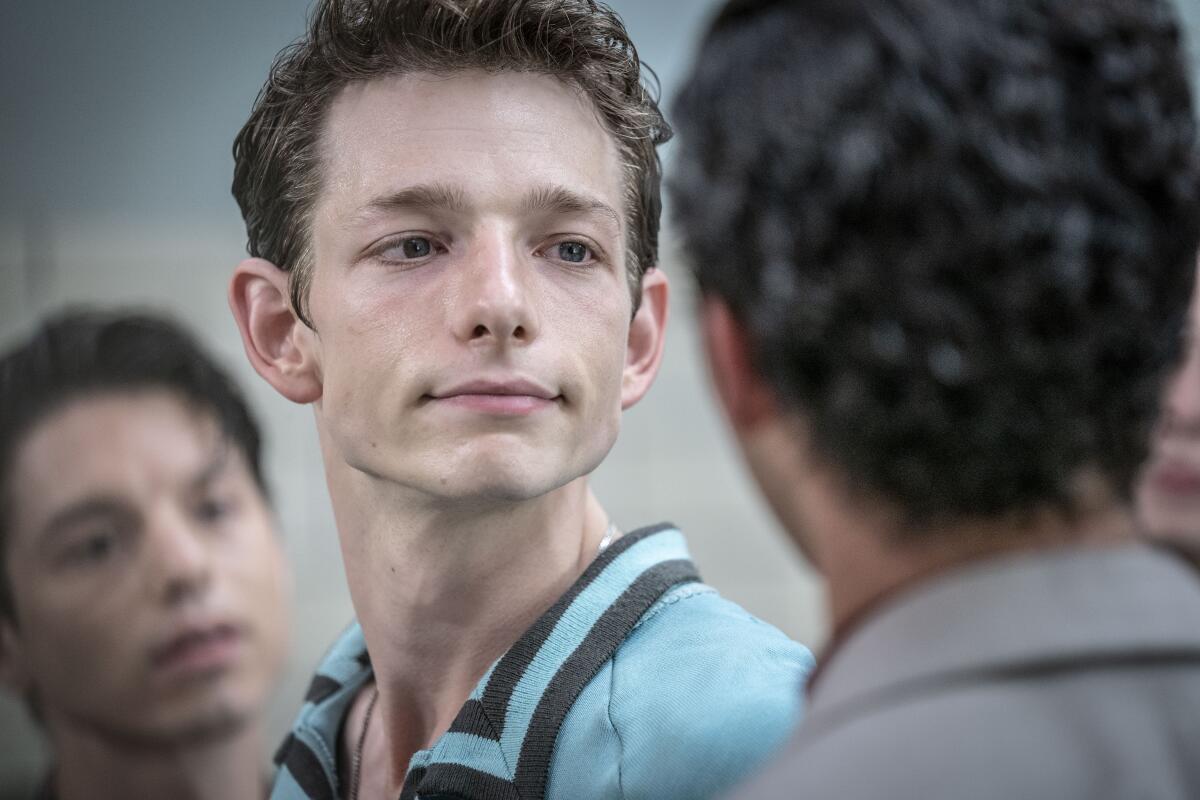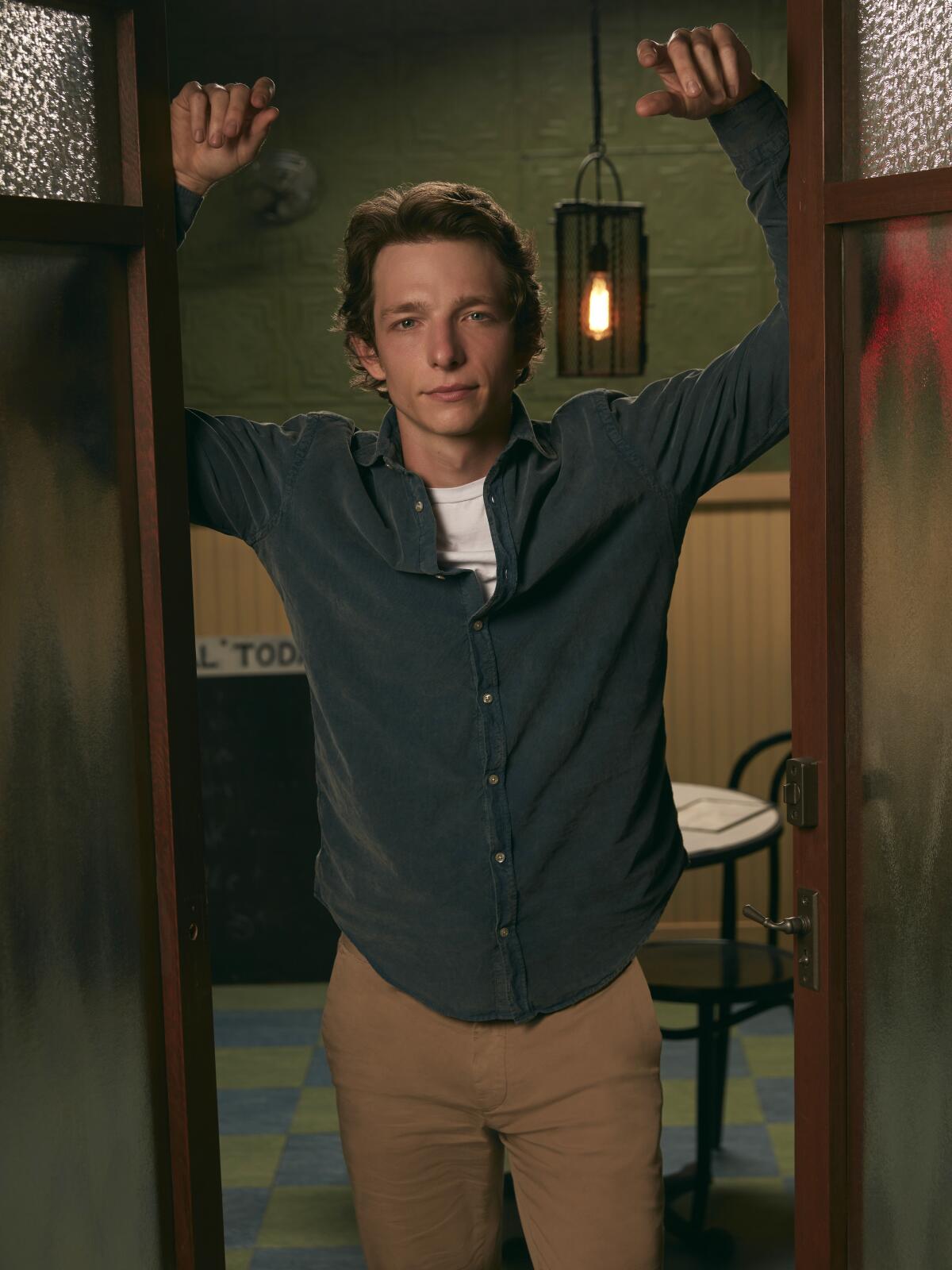As Riff, Mike Faist runs wild on ‘West Side Story.’ With Spielberg’s blessing

- Share via
Among the many fine points of Steven Spielberg’s new “West Side Story” is its stellar cast of relative unknowns, including Mike Faist, whose indelible portrayal of Jets leader Riff is earning him some supporting actor Oscar buzz.
Only 17 when he shook the dust of Gahanna, Ohio, off his shoes and headed for Broadway, it wasn’t long before he landed his first role as an understudy in the hit musical “Newsies.” Five years later, he received his first Tony nomination for his portrayal of suicidal teen Connor Murphy in “Dear Evan Hansen.” And now he can be seen as Dodge Mason, an outsider set on avenging his sister’s death on the Amazon Prime series “Panic.”
After sending in an audition tape for the lead role of Tony in “West Side Story,” he was surprised to end up playing Riff — who stepped up to lead the Jets street gang while Tony was in jail. “I was nervous walking into this production because of the Hollywood of it all and the scope of it all and the Spielberg of it all,” he says. “I thought this was going to be overproduced and a Hollywood dictator-run operation. And I would be the actor where they say, ‘Stand there, look there’ and be a prop. And Steven wasn’t that way at all.”
Here, Faist tells The Envelope what way Spielberg was, and talks about forming a tribe among the Jets as well as the real-life Riff he found in the photos of Bruce Davidson.

What’s a typical piece of direction from Steven Spielberg?
Steven’s like, “Show me what you got.” He’s there holding a cigar, “What do you think?” I was not expecting that. He’s really good at knowing when to step in and how to step in. He allowed me to run wild and trusted me with the homework I had done. So by the time we go on the set, we’re just living, breathing, doing the thing. He allows us to do our jobs and gives us space, and he’ll take it and sculpt it. The whole thing is being human and Steven’s a humanist.
He told you the story about “Raiders of the Lost Ark,” when Indy shoots the swordsman?
He told me the story of Harrison Ford getting food poisoning, shows up at the set after vomiting the whole night before. “I can only give you an hour.” And Steven’s like, “An hour!? What do you want to do, shoot the guy?” And Harrison jokingly said, “That’s kind of what I was thinking.” Steven was nervous with having Indiana Jones killing a man on screen. “Do you think we can get away with it?” And Steven does an amazing Harrison Ford impersonation. Harrison’s in the makeup chair, he leans back and gives him jazz hands and says, “It’s only a movie.” And history was made!
What was it like shooting “West Side Story” and then sitting on it for a year during the pandemic?
I was talking to Steven last year. I said if no one ever saw this movie, it kind of wouldn’t matter, at least to me, personally, because we actually made it and that was everything. You make it for yourself. You’re glad that people are able to see it because the experience was so great, and I think that translates and hopefully jumps off the screen.

You lost weight for the character based on photographer Bruce Davidson’s study of Brooklyn street gangs from the era. How does such a reedy guy carry so much weight?
You just mean what you say. In Bruce Davidson’s photo album they’re emaciated, strung out, totally broke. They would pool money at the end of the day to pitch in and get wine and French fries. Or they’re shooting heroin. These guys are not at the gym taking care of their body. They’re smoking cigarettes and living on the streets and barely surviving. Every stage version of “West Side Story” I’d seen was some big, imposing kind of guy. And, frankly, it just feels less interesting to me.
Did you look at Russ Tamblyn in the original?
I had to totally divorce myself from Russ. I can’t do what Russ does. You have to go back to the original source material and start from scratch. Starting with the physicality, checking out the photos, the nihilism, the sadness, the carefreeness, there’s so much in those photos. Talk to Tony [Kushner], about Shakespeare, “Romeo and Juliet,” the relationship between Mercutio and Romeo.
How did you pull the Jets together into such a cohesive unit?
We shot the rumble first and then the Jet song. We’d been together six months at that point. I was in rehearsal for four months. We had nothing but time to hang out. We did Jet-tivities where every single Jet had to choose an activity and regardless of what it was we all had to do it. We did a lot of crazy stuff that summer.

Remaking a classic like this is fraught with peril.
When Steven brought the idea to Tony, he said to him, “Why don’t you stick your hand in a blender? It’s faster.”
He’s right. Most remakes of classics are boorish money grabs.
In ‘61 it was groundbreaking, it won 10 Oscars. We’ve sat on the show for so long, it resonated in our subconscious and we’ve made it into something new, something fresh. And in 60 years they’ll be able to do the same. That will be the best one ever told.
More to Read
From the Oscars to the Emmys.
Get the Envelope newsletter for exclusive awards season coverage, behind-the-scenes stories from the Envelope podcast and columnist Glenn Whipp’s must-read analysis.
You may occasionally receive promotional content from the Los Angeles Times.










